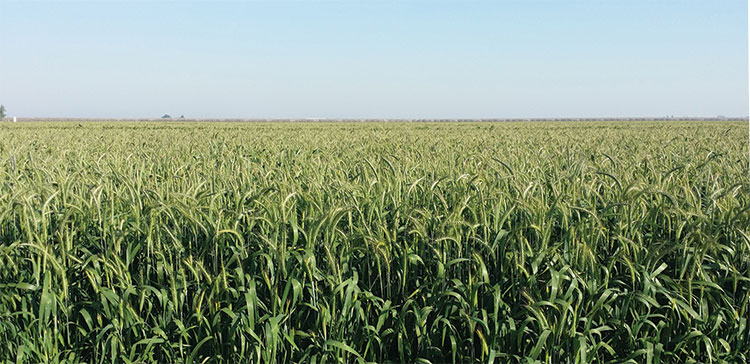
For farmers, local geography and climate determine the limiting nutrient for manure application. That being said, for much of the United States, phosphorus or nitrogen limit manure nutrient application.
A guide to manage manure nutrients is to use the four R’s: the right source, the right rate, the right time, and the right place. This also assumes there is a target crop yield and nutrient composition.
Why do people care about these four R’s? Efficient and sustainable livestock production relies on them. For many, feed nutrients are imported to farms. Nutrient management is an iterative process that allows you to more efficiently use residual feed nutrients for crop production.
Nutrient composition varies
Let’s start with a review of the four R’s.
Right source. Manure solids, slurry, and liquids have different concentrations and ratios of organic and plant (ammoniacal) nitrogen. Organic nitrogen requires soil microbes to mineralize the nitrogen to ammonium. Much research focuses on better prediction of mineralization rates. Animal diet, housing and manure collection, storage, and treatment all influence the composition of manure that is applied.
For all animal facilities, manure from replacement animals will have a different nutrient composition than that of the mature animals. Testing manure sources provides farm specific nutrient composition to predict plant availability.
Identify sampling protocols for soil and manure. Your local or state Cooperative Extension Service or Natural Resources Conservation Service office may have established recommendations for sampling and plant nutrient application guidelines.
Correct laboratory methods for analyses is essential for results to be useful. Consult your water quality permitting agency to be sure your analyses are compliant. For us in California, wet chemistry is required and labs need to meet a specific certification.
The old adage “Test, don’t guess” is essential to use manure nutrients. Consult with your nutrient management specialist to discuss concerns you may have related to using your various manure sources.
Right rate. Nutrient budgets provide a road map for application. The targeted crop nutrient removal is the starting point. Biological availability and losses are considered. Monitoring nutrient conservation is important to document nutrient stewardship.
Calculations require knowing the nutrient composition of manure and being able to deliver known amounts of manure to each field as uniformly as possible. It is important to be able to measure how much manure is applied. It is also necessary to track when and where manure is applied.
How much nitrogen or phosphorus needs to be applied to meet your crop goal yields? Your water quality permit may establish target application rates. For dairies in much of California, the rate of nitrogen application is targeted at 1.4 times the estimated crop nitrogen removal.
All nutrient applications are recorded. Nutrients applied divided by nutrients removed are compared at harvest. Annual reports to the regulatory agency include a crop by field summary of actual practices. Targeting the right amount of plant-available nitrogen may be equally important in your watershed.
In other parts of the country, phosphorus is the limiting nutrient. Phosphorus application rates are based on anticipated available soil phosphorus. A Bray, Mehlich, or Olsen test is conducted, depending on soil type, and application recommendations are based on test results. Your local Cooperative Extension Service or Natural Resources Conservation Service office should be able identify which test best suits your soil type.
Where it belongs
Right time. Timing manure nutrient applications with plant nutrient needs helps utilize nutrients efficiently. Solid and slurry manure applications usually are limited by local cultivation practices.

Manure spreaders and slurry tanks transfer manure from storage to fields. This often occurs before crops are planted. Liquid manure applications can be water run in irrigation systems. This allows applications once crops are planted.
Flood, pivot, or drip line irrigation systems may incorporate diluted liquid manures. Adequate filtering of particles is essential to minimize clogging of these systems. In some pivot systems, paired nozzles allow for delivery of liquid manure and rinsing of plants after liquid manure application.
Weather is another key factor. Timing of application requires the ability to get into fields as well as the ability of manure to stay where it is applied.
Frozen or saturated soils don’t lend themselves to optimum manure management. You’ll want to be sure you know your permit restrictions if you live in a state that prohibits manure application on frozen soil or if you have restrictions on application to saturated soils.
California doesn’t have frozen soils where dairies reside. However, it can have intense rains in winter, leaving some fields inundated with water. Application of manure to these fields when saturated is not allowed.
Right place. Different cultivation practices are used for permanent crops, pastures, and forage production. Nutrient application in orchards targets areas where tree or vine roots reach and band application of nutrients occurs.
Pasture or alfalfa fields provide long-term ground cover. Surface application with minimal incorporation occurs on these fields.
Annual crops often require more cultivation. Application with direct (shank injection) or partial (irrigation) incorporation of nutrients can be done. Surface application with direct incorporation (tillage) is also possible. The objective is to place nutrients near plant roots and keep them there as long as possible for plants to use.
Soil type and water holding capacity are important factors associated with keeping nutrients near plant roots. Soil management remains key in a nutrient management strategy.
Nutrient budgets take into consideration local conditions to identify targeted nutrient applications. Matching manure nutrients to crop nutrient needs helps use nutrients more efficiently. It also improves your bottom line to use nutrients you have already imported as feed and minimize the need for importing other nutrients to the farm.
If your animal operation does not have sufficient crop production capacity for the manure generated, you may have already identified off-site prospects for manure. On-farm practices to make nutrients more dense for export may be in place. No doubt, you are already paying close attention to new, potential on-farm manure utilization technologies. These technologies, paired with the four R’s, can help maximize delivery to your crops.
This article appeared in the February 2020 issue of Journal of Nutrient Management on page 4.
Not a subscriber? Click to get the print magazine.






